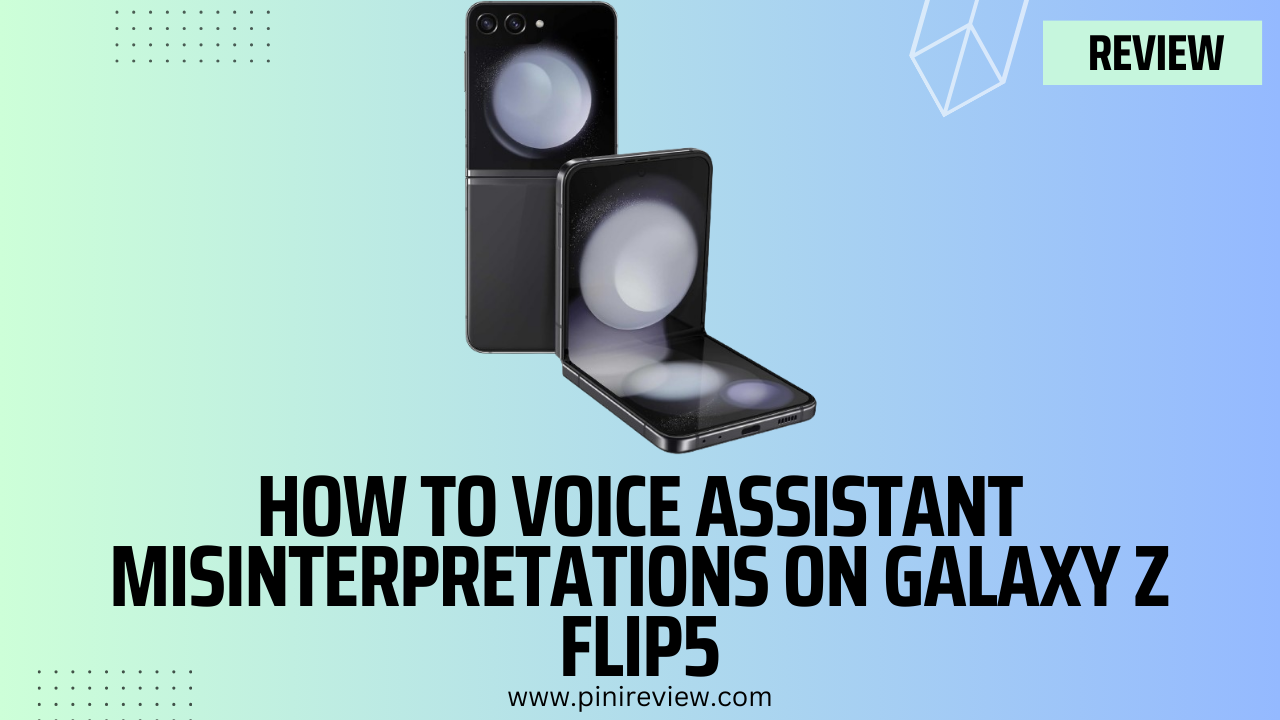Voice assistant misinterpretations on the Samsung Galaxy Z Flip5 can lead to frustration and hinder productivity. When your device’s voice assistant doesn’t understand commands as intended, there are several strategies you can employ to improve accuracy and enhance your experience. Here’s a guide on how to address voice assistant misinterpretations.

1. Articulate Clearly
Ensure you’re speaking clearly and at a moderate pace. Voice assistants rely on being able to “hear” and process your words accurately. Background noise, speaking too quickly, or mumbling can affect recognition accuracy.
2. Update Your Device
Keeping your Galaxy Z Flip5 updated is crucial for the best voice assistant performance. Software updates often include improvements to voice recognition capabilities. To update, go to Settings > Software update > Download and install.
3. Train the Voice Recognition
Many voice assistants offer a feature to learn your voice better. Go through the voice recognition training process if available. This can usually be found in the settings of the voice assistant app.
4. Check Language Settings
Ensure your voice assistant’s language settings match your own language and dialect. Mismatches in language settings can lead to misunderstandings. You can find these settings in the voice assistant’s app preferences.
5. Minimize Background Noise
Try to minimize background noise when using the voice assistant. Excessive noise can interfere with the assistant’s ability to understand you. Use headphones with a built-in microphone for better voice input in noisy environments.
6. Use Simple and Direct Commands
Complex or ambiguous commands can confuse voice assistants. Try to be as direct and simple as possible with your requests. Over time, you’ll learn the types of commands your assistant handles best.
7. Update Voice Assistant App
If you’re using a third-party voice assistant, ensure the app is updated to the latest version. App updates can resolve known issues and improve voice recognition. Check the Google Play Store or Samsung Galaxy Store for updates.
8. Review and Delete Misinterpreted Commands
Some voice assistants allow you to review past commands. If you find commands that were frequently misinterpreted, delete them or provide feedback if that option exists. This can help in refining the voice recognition algorithm.
9. Reset Voice Assistant Settings
If problems persist, consider resetting the voice assistant settings to default. Note that this may erase any learned data about your voice or preferences. You can typically find a reset option in the voice assistant’s app settings.
10. Contact Support
If you’ve tried all the above steps and still face issues with voice assistant misinterpretations, consider contacting Samsung support for further assistance. This could be particularly useful if the problem might be related to a deeper software issue or a glitch specific to your device model. Samsung’s customer service team can provide tailored support, potentially including troubleshooting steps you haven’t tried, firmware updates, or repair options if they determine the problem to be hardware-related. Don’t hesitate to reach out to them through the official Samsung website, via phone, or by visiting a Samsung store or service center in person for help.
11. Customize Voice Commands
Some voice assistants allow for the customization of voice commands. By setting up custom commands that you frequently use, you can reduce misunderstandings. Explore the voice assistant settings to see if you can create shortcuts for commands you often find misinterpreted.
12. Adjust Sensitivity Settings
If your voice assistant either activates too easily or doesn’t wake up when you want it to, adjusting the sensitivity settings can help. Look for options within the voice assistant settings that allow you to modify how sensitive it is to the wake word.
13. Use Specific Names for Smart Home Devices
If you’re controlling smart home devices with your voice assistant, ensure each device has a unique and specific name. Generic names can lead to confusion. For example, instead of naming lights simply as “kitchen,” name them “kitchen overhead lights” for clarity.
14. Feedback to Developers
If you encounter consistent issues with certain commands or phrases, providing feedback directly to the developers can be helpful. Many voice assistant applications have a feedback option where users can report misunderstandings or bugs.
15. Check for Interference
Other devices or electronic interference can sometimes affect the performance of voice assistants. Ensure there are no interfering devices nearby, especially those that might use similar frequencies or could disrupt Bluetooth and Wi-Fi signals.
16. Explore Third-Party Voice Assistants
If the built-in voice assistant isn’t meeting your needs, consider exploring third-party voice assistants available on the Google Play Store. Some users find alternatives like Google Assistant or others more in tune with their speaking style or command preferences.
17. Regular Practice and Patience
Like any technology, voice assistants improve with regular use and updates. Regularly using your voice assistant can help it better understand your speech patterns and preferences. Patience and consistent practice can lead to a more seamless interaction over time.
By incorporating these strategies, you can significantly improve the accuracy of voice assistant interpretations on your Galaxy Z Flip5, making your interactions more efficient and enjoyable. Remember, voice recognition technology is continually evolving, and periodic adjustments to your approach can help you stay ahead of any issues.

Leave a Reply